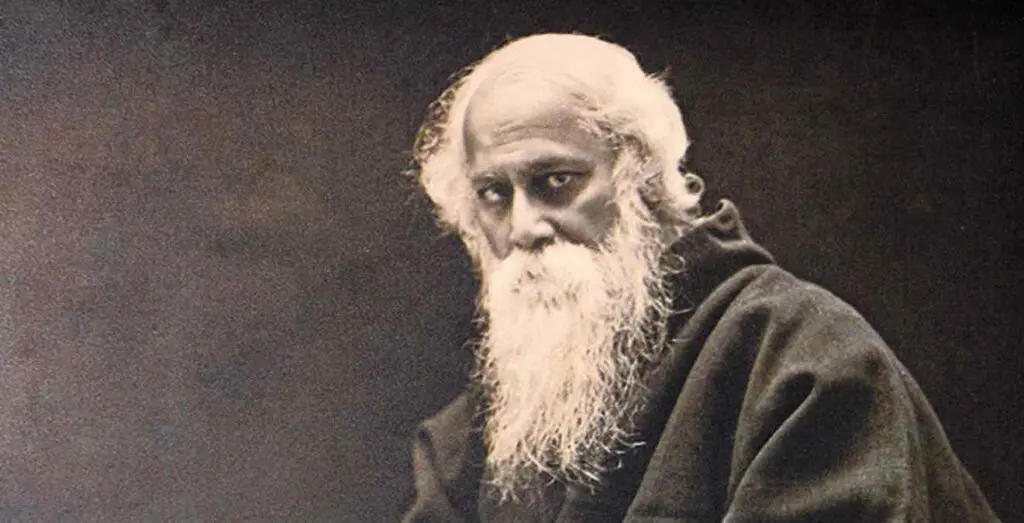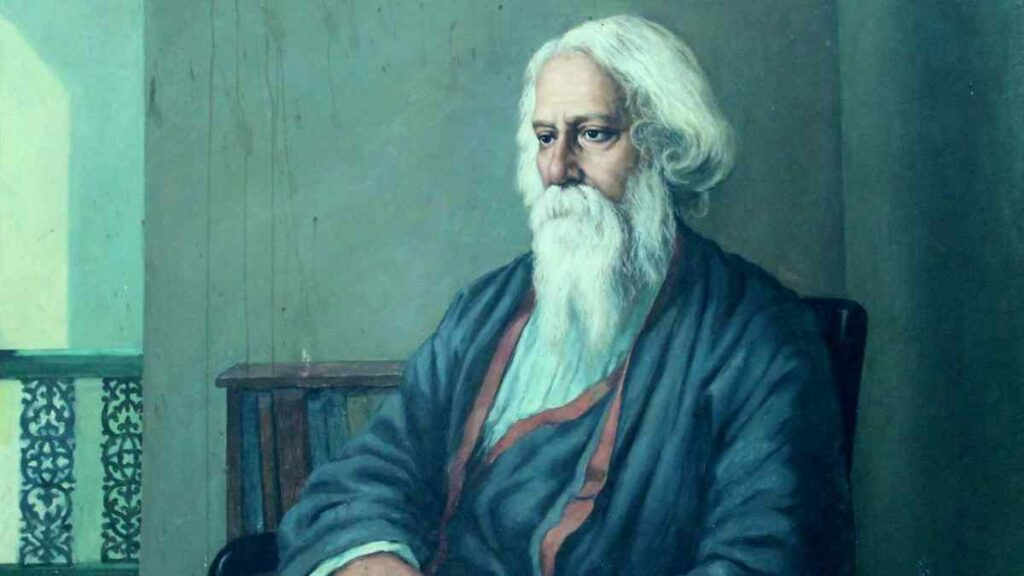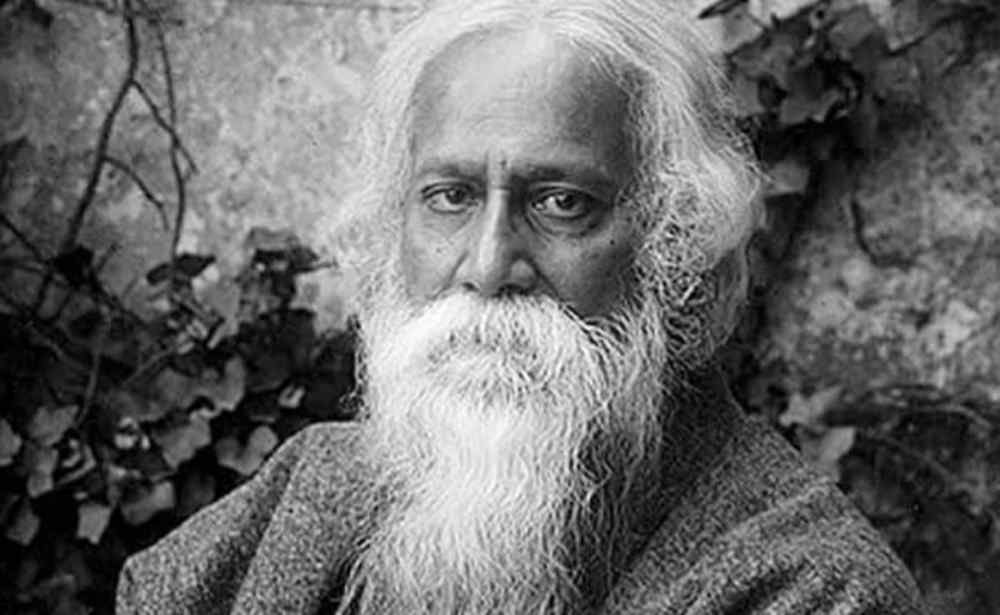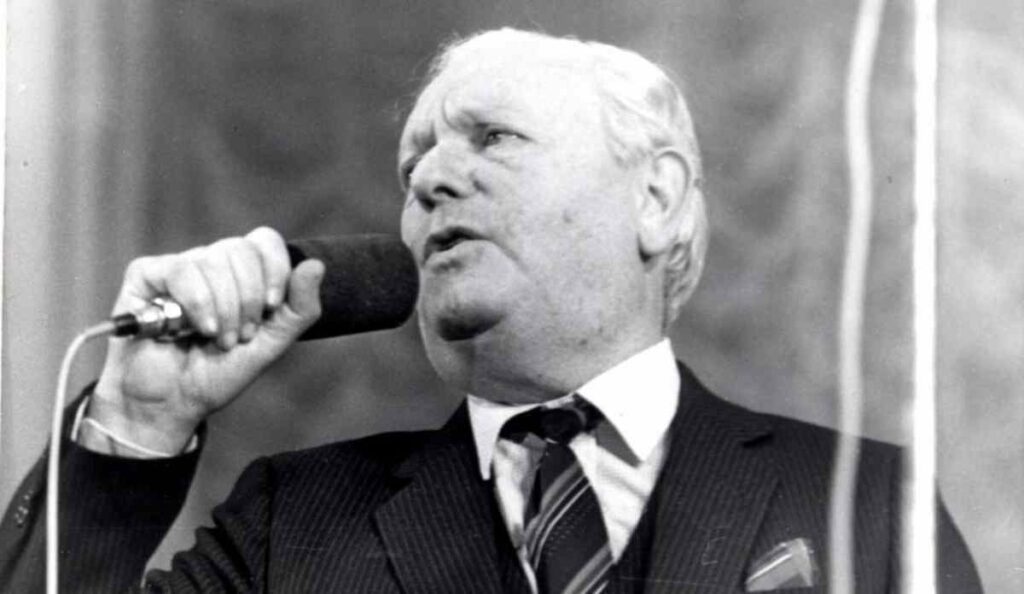Rabindranath Tagore - poet, musician, composer, artist. The work of Rabindranath Tagore has shaped the literature and music of Bengal.

Childhood and youth
Tagore's date of birth is May 7, 1861. He was born at the Jorasanko mansion in Kolkata. Tagore was brought up in a large family. The head of the family was a landowner and could well provide children with a decent life.
The boy's mother died when he was a child. The upbringing of the children was mostly done by invited teachers and servants. The head of the family traveled frequently. He instilled in children a love of knowledge and art.
The Tagores' house often hosted creative evenings, at which compositions by the best Bengali and Western maestros sounded. Children were brought up in the advanced traditions of that time. As a result, almost all people from the Tagore family proved themselves in science or art.
Rabindranath did not like to study school subjects. Under the supervision of his older brother, he went in for sports. The guy loved wrestling, running, swimming. In his youth, he became interested in painting, literature and medicine. He studied English in depth.
When Rabindranath was 18 years old, he, along with the head of the family, left for the foothills of the Himalayas. The young man listened to melodic compositions in the sacred Golden Temple of Amritsar. In addition, he was imbued with astronomy, Sanskrit and classical poetry.
The creative path of Rabindranath Tagore
When the young man returned from a trip, he took up writing several poems and a full-fledged novel. Then he made his debut in the genre of the story. He published The Beggar Woman.
The father saw in his son only a lawyer. The young man obeyed the will of the head of the family, so in 1878 Rabindranath entered University College, which was located in London.
Tagore spent several months finally making sure that jurisprudence was not his path. In the end, he took the documents and began to do what really brings him pleasure. In England, he was lucky to get acquainted with the rich creative heritage of Shakespeare.
He continued to write plays. Later, his brother also joined him. They organized literary evenings. Dramatic works were born from the plots of short stories. Often they featured a deeply philosophical theme of being and the meaning of life.

In 1880 Tagore returned to his homeland. From this period of time, the master of the word regularly publishes stories and novels that he composes under the influence of the best European traditions. This approach was new to Brahmin classical literature.
He created a huge number of poems, short stories and novels. Tagore simply managed to talk about rural life, the problems of modern society, religion and the conflict of "fathers and sons."
The lyrical work "The Last Poem" has taken a special place in the creative heritage of the master. The poem was ideal for the musical composition of Alexei Rybnikov, which sounded in the tape "You never dreamed of."
There were periods when Tagore had no inspiration. This period began in the 30s. When the writer broke her silence, she published several essays with research in the field of biology. At the same time, a presentation of several poems and plays took place.
At that time, Tagore's works are distinguished by depressive colors. Most likely he had a premonition of an imminent death. But, one way or another, the work of Rabindranath Tagore of the late 30s is the best thing that happened in Bengali culture.
The musical legacy of Rabindranath Tagore
Over a long creative career, he became the author of more than several thousand pieces of music. He was not limited to certain genres. His repertoire includes prayer hymns, lyrical melodies, folk works. His composing side throughout his life was inseparable from the literary.
Some of Tagora's poems became songs after the death of the creator. For example, in the 50s of the last century, his verse became the basis for the creation of the Indian national anthem.
He excelled as an artist. Tagore painted over 2000 paintings. He used advanced techniques in painting canvases. The master positioned himself as a realist, primitivist, impressionist artist. The use of non-traditional paint colors and regular geometric shapes are the main highlight of Tagore's work.
Rabindranath Tagore Personal Life Details
Little is known about his personal life. In 1883 he married ten year old Mrinalini Devi. It was at that time that early marriages were encouraged. The family had five children, two of whom died in infancy.

The beginning of a new century for Rabindranath Tagore brought a lot of grief. First his wife died, then he lost his daughter, and then his father passed away. In 1907, his youngest son died of cholera.
Interesting facts about the composer
- His poems are the anthems of India and Bangladesh.
- He did charity work. Tagore helped children from poor families get an education.
- Tagore spoke negatively about Hitler. He argued that the ruler would receive retribution for the wrong done.
- He supported the revolutionary Tilak and formed the Swadeshi movement.
- The master suffered from color blindness.
Death of Rabindranath Tagore
In the late 30s, pain began to torment him. Doctors could not make a diagnosis for a long time. Once Tagore lost consciousness and spent several days unconscious. When the pain receded, he returned to work.
In 1940, he again lost consciousness. Tagore never got out of bed again. His secretary and close friends helped him write compositions. They believed that soon the master would get stronger and get on his feet. But Tagore's condition left much to be desired. The miracle didn't happen.
August 7, 1941 he died. He died in his own house. Doctors were unable to determine the exact cause of death. Many are inclined to believe that he died of a debilitating disease and old age.



